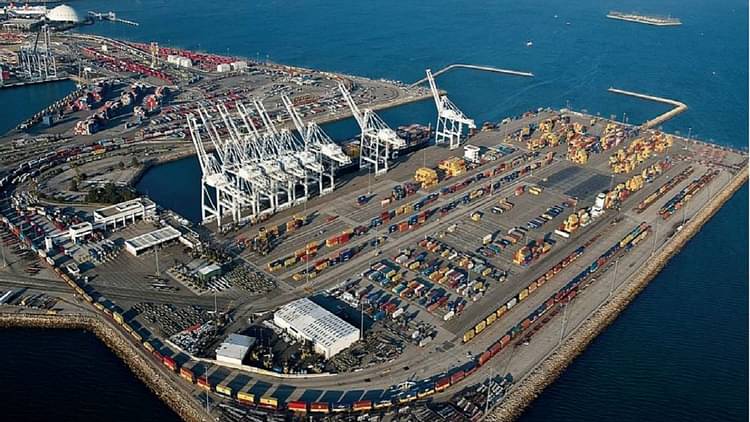While India’s policy makers have been tomtomming the geostrategic implications of the Indo-Iranian collaborative Chabahar port project, Tehran’s assessment seems to differ.
Recently, Iran’s Institute for Strategic Research (ISR) held a meeting titled "Cooperation between Iran and India in Chabahar: From idea to reality". The speakers were former Iranian Ambassador to India Seyed Mehdi Nabizadeh, former Iranian Ambassador to Pakistan MashallahShakeriand JafarHaghpanahfrom the Regional Studies department at Tehran University. Haghpanah is also a member of directorial board of “Iranian Association for Regional Studies”. The director of the board was Rahim Bayazidi, director of the International Relations Department, ISR.
What the speakers said shed some light on the practical status of the project, the various shortcomings that are preventing it from achieving its stated objectives and the overall trajectory of Indo-Iranian partnership.
Bayazidi: Post Islamic Revolution, Indo-American relationship has defined Indo-Iran relations
He said, “The relations between Iran and India after the Islamic Revolution of Iran (1979) have had relatively few ups and downs until now. Iran-India relations have always been influenced by international actors, and Chabahar is no exception to this rule. The impact of regional and trans-regional variables is more serious in Chabahar and it forces Iran and India to make strategic choices against each other. In recent years, India has moved closer to the United States and the West and reduced cooperation with Iran and China. India has also participated in the US super-maximum economic pressure campaign against the Islamic Republic of Iran. Due to that, it has reduced its commercial relations with Tehran to the lowest level in recent years. Presently, one of the most important issues for India is the US presidential election and its outcome, which can influence Iran-India relations.”
Nabizadeh: Existing problems need to be removed to increase India’s interest
Nabizadeh initially pointed to the strategic importance of Chabahar for Iran and noted that the Islamic Republic of Iran had a strategic vision for Chabahar. But he added that it remained to be seen how valuable Chabahar was to India. “We should see what percentage of India’s foreign trade canChabahar handle. Another important question is India's position in international relations scene. There are about 200 countries in international relations, perhaps 20 of them can be described as powerful and emerging actors. Does India define itself among these 20 countries? India should definitely be considered as one of the emerging countries with an important future. Therefore, India has an important position and the Islamic Republic of Iran should definitely seek to develop relations with this country and even China and Pakistan.” He mentioned the historical and cultural ties, the history of the revolution and independence as the three main areas for strengthening the relations between Iran and India.
“India expects a secure, completed, ready port in Iran that have access to northern Iran, Russia and the Caucasus. Therefore, in the discussion of Chabahar, we must eliminate the existing problems and obstacles as soon as possible,” he said.
Shakeri:Gwadar’s capacity limited but Indian investment in Chabahar miniscule
Shakeri considered geography and energy as the two main advantages of Iran and In the matter of geography, ports were introduced as the main points of transit. “A port does not prosper only with its internal development,but also the connectivity and access of the port to the mainland and backshore countries play a decisive role.So when it comes to Chabahar, in addition to the $1 billion infrastructure cost in Chabahar, the focus on the coastline and backshore, the free zone, the urban fabric, the roads, the railroad that connects the port to the Milak border in Afghanistan must all be defined together and developed together so that Chabahar can fulfill the expectations.”
He pointed out that India’s investment in Chabahar, including the $85 million it spent in Phase One, up to the $500 million that India intends to spend, is very little compared to the costs borne by the Islamic Republic of Iran. “Money, infrastructure, technology and any kind of investment from China, India, etc. in Chabahar will not resolve the issue. It is important that the presence of these countries leads to maritime traffic in Chabahar,” he said. Shakeri then put forward the question whether India's investments in Chabahar have led to increased traffic at the port or not? “Phase One of the port, developed by India, only led to some wheat export to Afghanistan and practically no significant change has been noticed in Chabahar traffic,” he added.
“What is Chabahar’s national and regional vision? And is there any destructive competition with the port of Gwadar in Pakistan or not,” he asked. Shakeri pointed out that despite all the problems, the port was now handling eight million tons of cargo every year.
Shakeri noted that Chabahar’s importance to Iran was mostly in terms of international branding than in maritime and economic terms because in many cases, the cost of sending goods from Bandar Abbas and other ports of the country to meet domestic needs and that of neighbouring countries is cheaper than Chabahar
“As first investors in Gwadar since the early 1990s, Chinese have installed only three 200-meter pier posts with a water intake of less than 12 meters and a number of giraffe cranes in the port. Therefore, this port is incapable of mooring large ships with high tonnage. Contrary to popular belief, the port of Gwadar has not developed much in recent years and its capacity has remained limited at the initial level in terms of urban fabric and the provision of maritime supplies, which are the most basic needs for mooring ships.Drinking water, electricity, airports and road facilities in the port of Gwadar are very poor.The route from Gwadar port to Pakistan's Gilgit and Balochistan provinces is very arduous and Pakistan is trying to intimidate India with widespread propaganda by encouraging China to invest more in Gwadar for its own interests.If ever, Gwadar will reach the capacity of Chabahar now in ten years. Two ships docked in Chabahar today, one of which was of 66,000 tons. In Gwadar, such a ship docks once every three months,” he said.
Haghpanah: Afghanistan is disappointed with Iran and looking for new ways
Afghanistan, as a landlocked region, is caged between three important regions of Central Asia, Middle East and the subcontinent.Given these circumstances, it’s a priority to diversify its transit routes.And Chabahar is considered as the main transit route of this country. To get rid of the landlocked imposition on this country, this is a must,” Haghpanah said.
“Afghanistan is frustrated with Chabahar's slowness and is looking for new ways. And practically, Afghanistan, except for a few cases, has not been able to gain any profits from Chabahar. Geopolitical developments had a negative impact on the interests of Iran and Afghanistan while affecting the development process of Chabahar,” he added.
He continued, “At the regional and international level, there are four axes of power that will affect the future of Afghanistan. The axis of India and Pakistan where China has a very important role and sees Afghanistan from the perspective of Pakistan. The second is the Indian-American axis, which has converged on the future of Afghanistan, and in many cases even the US government is pushing Afghanistan towards India to meet its military needs through India which plays a key role in Afghanistan's view. The third axis is Iran and Russia which has reached some terms on peace with the Taliban, etc., but it is still incomplete.”
India, Iran have not cooperated on Afghanistan
Haghpanah dedicated the last part of his speech to the feasibility of cooperation between Iran and India in various fields. He mentioned that Iran and India did not have a good record of cooperation in Afghanistan. “From the period of Soviet occupation, India tied itself with Moscow and did not cooperate with Iran. New Delhi and Tehran worked together for some time during the Taliban rule but India paid heavily for that. From 2003 onwards, although the scope of Iran’s cooperation with India in Afghanistan was very large, India had basically put interaction with the United States in Afghanistan as its central agenda and did not cooperate with us,” he said.
He ended his statement with, “With India's delay in Chabahar, we missed many opportunities to cooperate with Korea and Japan in 2016-17, when JCPOA was still in place. Cooperation with China, for example, could have already begun. There has been an optimistic view of India's political will in Chabahar since 2016, although we have not had successful cooperation with India in either Chabahar, Farzad B or the North-South Corridor. India only works with us to balance China and Pakistan on a few occasions and has not taken any serious action and we have paid the price. India needs Chabahar, but we must first overcome internal problems so that we can negotiate well with them.”
































